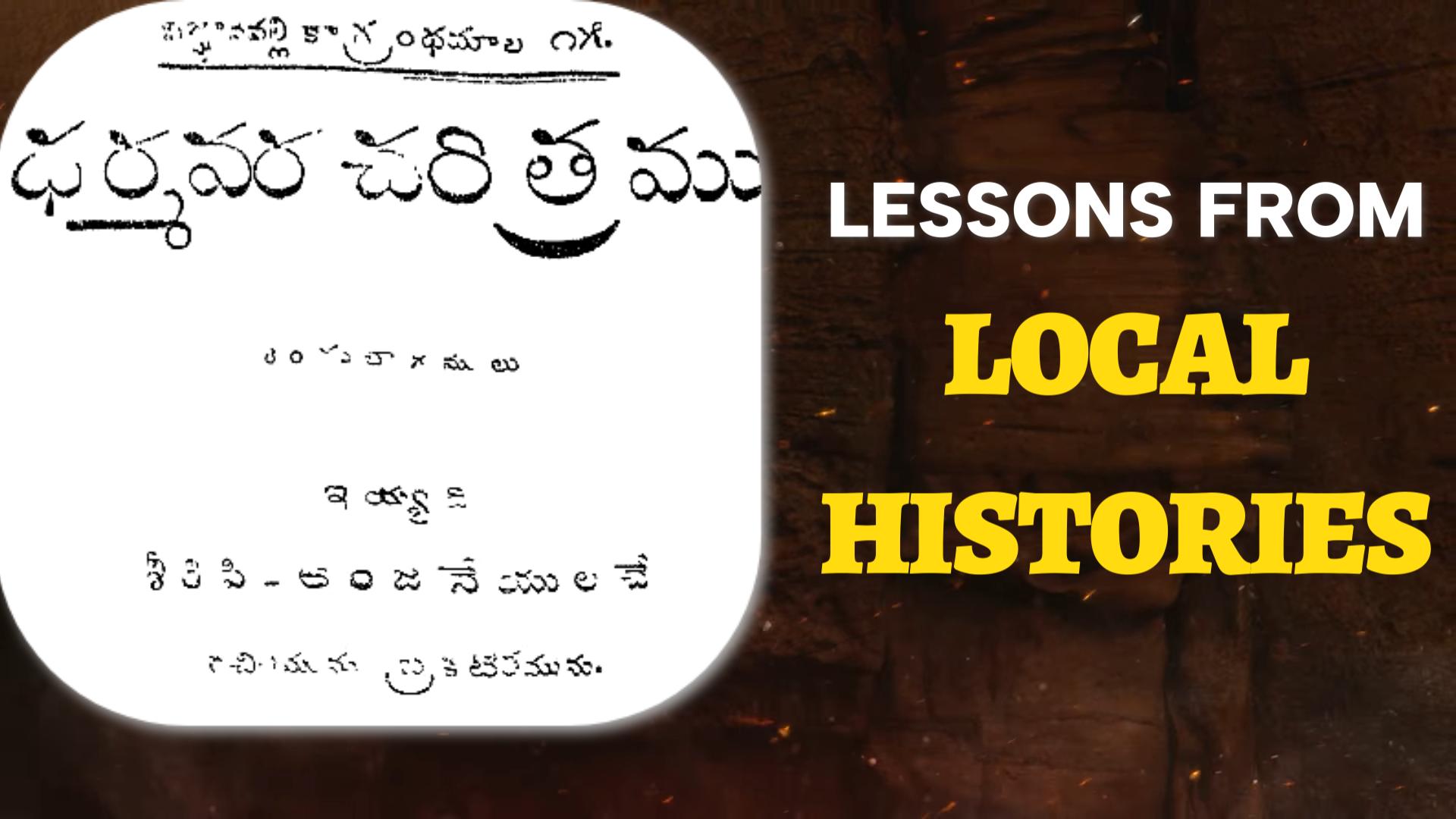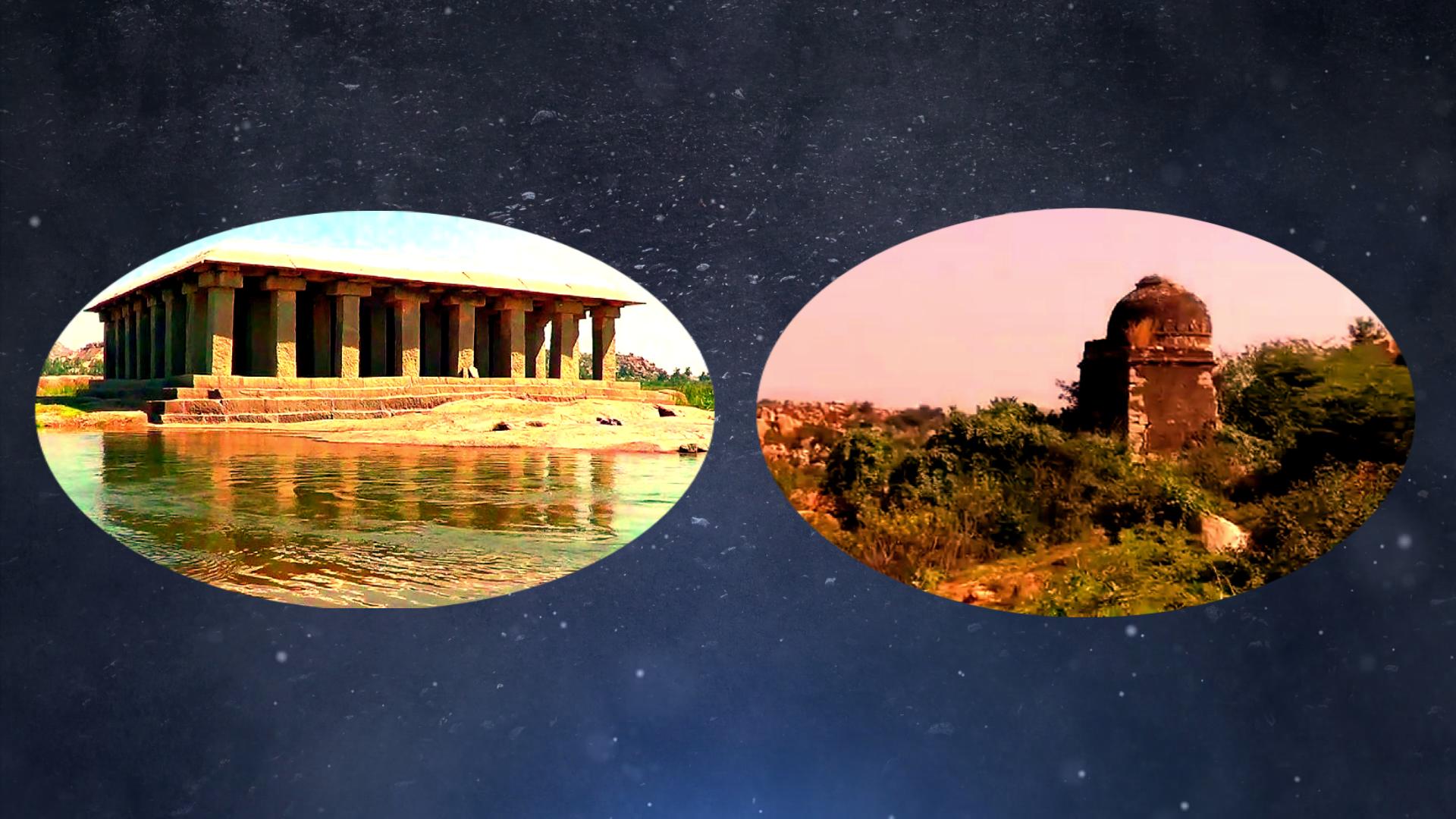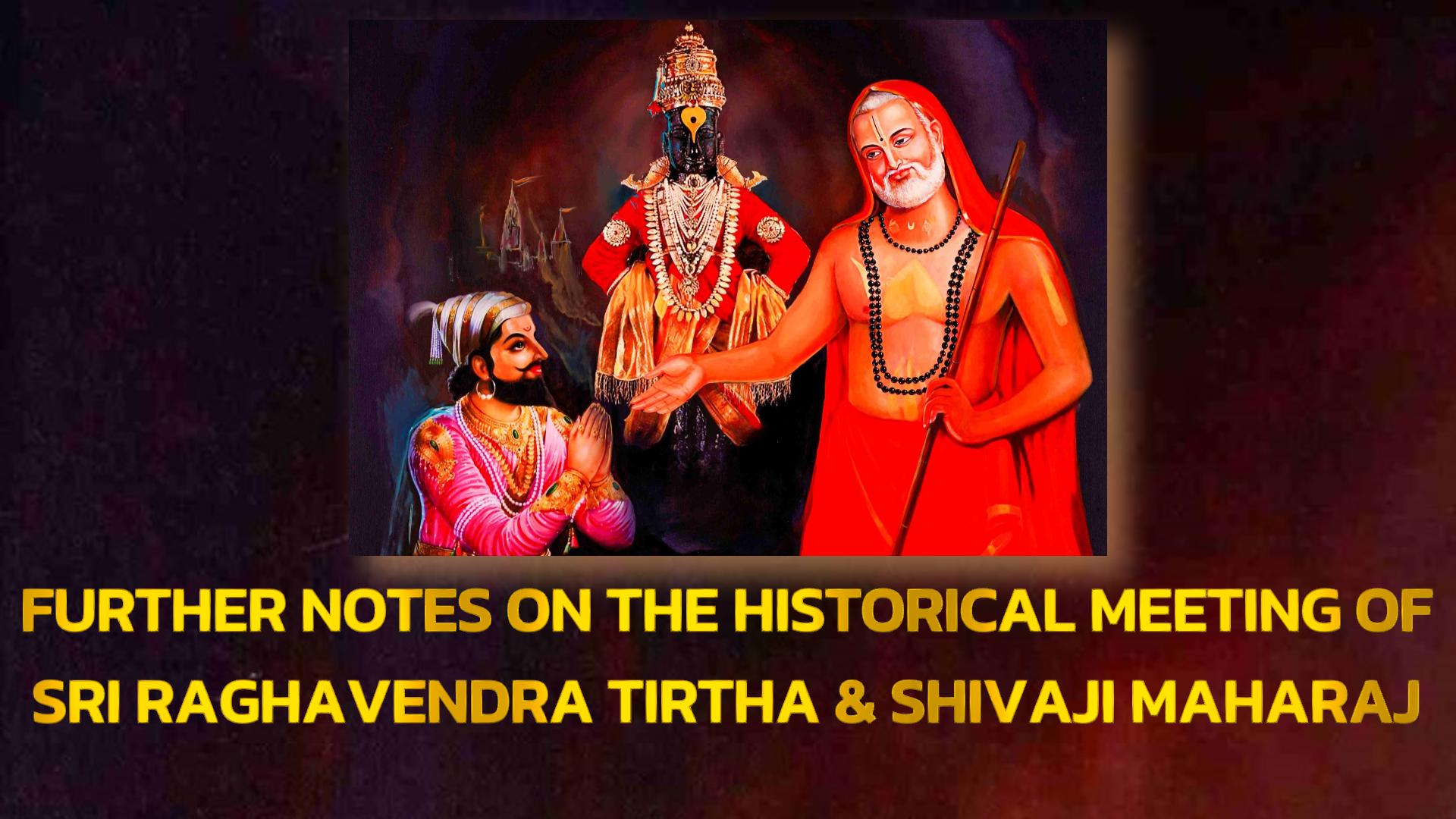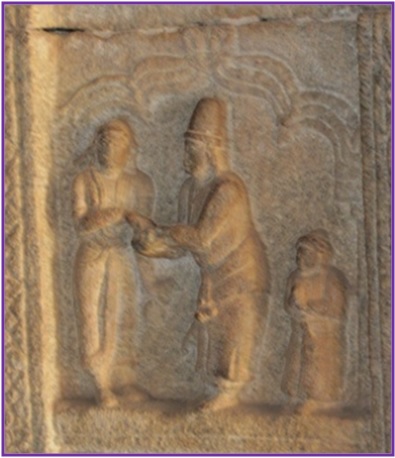Sri Jayatirtha and his mula brindavana has become a dispute between two Madhva Mathas and many arguments are being exchanged since 2014.
This issue is not as unfathomable as Bermuda Triangle or Shangrila city. It only needs a little bit of commonsense, an unfalsified will and an unbiased research. More importantly, this issue demands for the unity of mindsets under the grace of Sri Jayatirtharu himself.
I don’t think that the future generations shall ever waste their time to dispute for the sake of dispute and there shall come a day on which this issue will be closed on the merits instead of myriad blind faith.
Having said this and after a long spell of silence over Jayatirtha’s mula brindavana, I have been part of an online discussion forum in which I have posed a question Narahari Sumadhwa, the lone online voice of Malkheda, and then posted a reply to it.
It raked up the “Smarana” issue that Malkheda camp always applies to the 18th shloka of TP’s Purva Prabandha.
Also, Chiran Chidambarji, the guru for many members of that online forum, too asked a critical question on my reply.
Hereunder I reproduce the screen shots of the discussion that form the basis of the present article.
My question to NS & My reply:

Chiran Chidambarji’s Query:

NS’s response:v

I definitely owe a lot to the participants in terms of explaining the missing links as my reply was incomplete.
Referring to my reply in the online group, I wish to add the following points.
Tiruvengada Kottam:
Historically speaking, the present day areas such as Chandragiri, Kalahasti and other surrounding areas were part of a revenue division called Tiruvengadakottam.
The earliest known reference to this name was found in Pallavas’ reign. Since the time of Pallavas of Prakruta charter and up to the end of Vijayanagara Empire, this revenue division continued to exist with little or no modifications to its boundaries. Thus, historically the whole downhill and plains of this part has been referred to as Tiruvengadakottam.
Geographical references inform that Suvarnamukhi originates in Chandragiri hills which is again part of Seshachala hill range belonging to the extensive Eastern Ghats. Suvarnamukhi travels a distance of 130 KMs approximately and has very small catchment area of roughly around 3,000 sq.KMs .
It finally drains itself into Bay of Bengal (Purva Samudra). It doesn’t have any major tributaries except a small riverlet called Kalyani river which originates in Tirumala hills but immediately merges into Suvarnamukhi at Tondavada (Agastheeshwaralaya).
According to Puranas Suvarnamukhi is one of the holiest rivers of Bharata Desha. I have collected following shlokas from 4 Puranas that are available to me.
Bhavishyottara Purana, 2 – 40, 41, 42
इतिसंकल्प्यगॊविंदॊलीलामानुषविग्रहः
मायावीपरमानंदंत्यक्त्वावैकुंठमुत्तमम्
गंगायादक्षिणॆदॆशॆयॊजनानांशतत्रयॆ
सुवर्णमुखरीनामनदीनांप्रवरानदी
शुकस्यवरदापुण्याअगस्त्यमुनिपूजिता
तस्याऎवॊत्तरॆतीरॆक्रॊशार्थद्वयमात्रकॆ
Markandeya Purana (2-67)
वैकुंठलॊकात्गरुडॆनविष्णॊःक्रीडाचलॊवॆंकटनामधॆयः
आनीयचस्वर्णमुखीसमीपॆसंस्थापितॊविष्णुनिवासहॆतॊः
Skanda Purana 2-1-28, 77, 78
गंगायाःदक्षिणॆभागॆद्विशतीयॊजनॆद्विज
पूर्वांबॊधॆःपश्चिमॆतुपंचभिर्यॊजनैर्मितॆ
सुवर्णमुखरीतीरॆचॊत्तरॆक्रॊशमात्रकॆ
वॆंकटाद्रिरितिख्यातःसर्वलॊकनमस्कृतः
Brahma Purana 1-6,7
मॆरुपुत्रॊमहाशैलॊजांबूनदनदीतटॆ
यॊजनत्रयविस्तीर्णःत्रिंशद्यॊजनमायतः
वॆंकटॆतिकृतंनामपित्रातस्यमहात्मनः
Brahma Purana 1-46, 47
प्रचलन्वर्त्मचॊल्लंघ्यदूरंलक्षार्धयॊजनम्
उत्तरॆदक्षिणांबॊधॆःद्वात्रिंशद्यॊजनांतरॆ
पूर्वांबॊधॆःपश्चिमॆतुपुण्यॆस्वर्णमुखीतटॆ
पपातवॆगतॊवायॊःशैलःशॆषसमन्वितः
It is interesting to note that in all the Puranic texts, Tirumala has been described as a holy place located on the banks of Swarnamukhi. But, at present, Suvarnamukhi doesn’t flow in downhill (Tirupati) & neither flowing down from uphill (Tirumala).
As I have written in the Facebook posting, there are available the river tracts in and around Tirupati that confirm the flow of Suvarnamukhi quite close to Tirumala hills. Hereunder are some of the photos:

Agastheeshwara Temple, Tondavada standing on the banks of Suvarnamukhi

Mandapam in the middle of the dried river bed of S. Mukhi – Located opposite to Agastheeshwara temple, Tondavada
In this video link you can see the Suvarnamukhi flowing very close to our house in Tirhchanoor:
https://video-cdg2-1.xx.fbcdn.net/v/t42.1790-2/12237744_1014376768606172_880443443_n.mp4?efg=eyJybHIiOjQ3OCwicmxhIjo1MTIsInZlbmNvZGVfdGFnIjoic2QifQ%3D%3D&rl=478&vabr=266&oh=fa2de9a8e7b9daaae72fafb7bd25ed8d&oe=572BCE47
All these evidences confirm the fact that Sri Vadiraja wrote the shloka on Swarnamukhi during his visit to Tirumala. Thereby, he maintained his oath of describing only those kshetras/murthis that he visited.
The Concept of Vyuha in Tirtha Prabandha:
Now, turning to the query raised by Chiran Chidambarji, let me explain the Vyuha concept that I believe to be embedded in Tirtha Prabandha, more particularly in Tirumala shlokas.
It is evident that the Purana shlokas mentioned above have always given the location details of Tirumala by keeping Swarnamukhi as the closest landmark. Thus the shlokas are establishing an inseparable link between Tirumala and Swarnamukhi.
In Bhavishyottara Purana , Bakula leaves for Narayanapuram and on the way meets up with the maids of Padmavathi at Agastya Ashrama i.e. Tondavada. Here Vedavyasa writes as “हय मारुह्य बकुला सुवर्णमुखरीं तदा” which means that as soon as Bakula descended Tirumala hills, she reached Swarnamukhi river on which banks Agasthya consecrated a Shiva temple (तीर्त्वा अगस्त्याश्रमम् प्राप्य….शिवालये शिवं द्रष्टुं).
In addition to this, Shrinivasa in the guise of Koravanji when gives out soothsaying to Dharanidevi He says “श्री वॆंकटगिरीशं च कालहस्तीश्वरं हरम्” thus giving a hint that Venkatagiri & Kalahasthi are part of same Kshetra.
With this background, I have come to an understanding that the other reason for Rajaru to leave out Kalahasteeshwara or Kapileshwara or Agastheeshwara is that all these Shaiva kshetras are not exclusive from Tirumala kshetra but part & parcel of it. In other words, it can be said that these temples are like “Upa Alayas” to Tirumala temple.
As far as the Pramana for the Vyuha’s expanse as asked by Chiran Chidambarji, I don’t know the exact answer. But by taking the Purana shlokas quoted above as Pramana, I am of the opinion that the distance between Swarnamukhi River and Tirumala could be the average span of a Vyuha.
Here there is a need for experts’ help as there are differences in the Purana shlokas about the distance between the river and the hill. For e.g. Bhavishyottara gives the distance as 21/2 Krosha (क्रॊशार्थद्वय मात्रकॆ) and Skaanda puts it at 1 Krosha (सुवर्णमुखरी तीरॆ चॊत्तरॆ क्रॊश मात्रकॆ). If I am not wrong, 1 Krosha is roughly around 3.5 KM and the same could be taken the lowest span of a Vyuha.
As this calculation is beyond my capability, I leave it for the learned ones to figure out.
Conclusion:
At the end, both Vedavyasa and Vadirajaru are on the same page as far as Tirumala, Kalahasti and Swarnamukhi are considered. All these three form part of the same Kshetra.
On the same lines, it can be safely concluded that Rajaru identified Nava Brindavana as the Vyuha for Madhva World (मध्व सिद्धांत धरणी) in which he saw Jayatirtharu being in a blissful mood, enjoined by other Diggajas. Thus there is no way that Rajaru did an assumed act of “Smarana” either at Tirumala or at Anegundi.
*****




